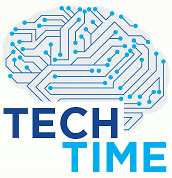This is the conclusion of a two-part series on the effective and efficient use of EHRs.
In our last article in Psychiatric News, you learned tactics for optimal use of the electronic health record, or EHR. Many EHRs have features—like order sets and text-expansion shortcuts—that can help you finish the work day on time. But what about managing the therapeutic alliance, when you’ve introduced the EHR as the third entity in the room? Or the transference toward the EHR?
For starters, the physical placement of your computer can make the difference between effective and poor nonverbal communication.
A study involving nonverbal communication found that the least effective spaces are ones where the clinician’s back is to the patient. An observational study of 50 videotaped sessions in the VA Health System found that an open setup—in which a computer and patient are positioned within the same field of view as the physician—helped the physicians view both the EHR and patient simultaneously, verify data, and even share information on the monitor for patient education. Sustained eye contact, a close distance to the physician, and direct body orientation contributed to a feeling of positive affect, social readiness, emotional support, and availability for communication.
In contrast, closed setups prevented the physicians from making eye contact. In closed setups, the patient’s chair and the computer were placed 180 degrees from the physician. The physician had to turn his or her back to the patient while using the computer.
Aside from computer and furniture placement, there are many other strategies for improving nonverbal communication. Remember to be mindful of body language, even while typing. And think of the computer as an opportunity to use visual aids.
Be POISED During Clinical Encounter
In a commentary on EHRs in the January 2016 JAMA Internal Medicine, Richard Frankel, Ph.D., proposed POISED as a mnemonic for physicians to remember to use good computer habits while in a patient-doctor encounter. We’ve adapted these six steps for mental health clinicians here:
•
Prepare: To improve the patient experience and trust, know about the patient ahead of time instead of logging in, fiddling with, and becoming frustrated with the computer in the first few minutes of the patient encounter.
•
Orient: Frankel advised that the best practice is to spend 1 to 2 minutes conversing with the patient without using the computer at all. He recommended following up with a bridging statement, such as, “I’m going to be using the computer from time to time to help me keep track of things.”
•
Information Gathering: Patients nowadays expect clinicians to use the computer when gathering information. They may question whether the clinician is taking them seriously if they are not entering information into the computer. At the same time, if patients are discussing something very emotional, not using the computer is important to demonstrate sensitivity and connection.
•
Share: Clinicians can point out items on the computer display as a way to discuss and double-check parts of the patient history, assessment, and treatment plan. This can have a positive effect on the therapeutic alliance.
•
Educate: Clinicians can use the computer screen as a visual aid and teaching aid. For instance, clinicians could show a patient’s medication history, a graph of changes in mood over time, or a diagram of the human brain.
•
Debrief: Computers should be used to capture instructions. Entering information while verbally instructing patients—for outpatient discharge print-outs or after-visit summaries (AVS)—can reinforce the importance of the instructions.
POISED is a framework that works with all patient-clinician encounters—not just for physicians, but for all behavioral and physical health. We anticipate that this framework will be needed more as patients bring in technology that records their symptoms, such as smartphone mood-tracking apps, journaling apps, and activity tracking devices.
Keep the Good in Mind
Despite the hassles of EHRs, keep their benefits in mind. EHRs offer numerous benefits over paper records, such as streamlining communication with colleagues and other providers, teaching moments with patients, and being more reliable records. And, as noted in the last issue of Psychiatric News, there are many shortcuts that can make your documentation process faster.
Knowing these tactics and clinical practices will help you be part of the discussion about the role of information technology in psychiatry so you can help shape their use in our profession. ■
“Computers in the Examination Room” can be accessed
here.


